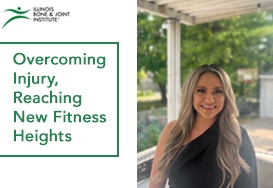Wrist sprains are a common upper extremity injury. This sprain commonly occurs from falling in sports, outdoor activities, and in wet or slippery conditions. When we fall, our first reaction is to outstretch our hands, which can cause further injury. Avoiding this response to falling can prevent wrist sprains.

A sprain occurs when the wrist is bent or twisted forcefully.
If you fall, make sure to protect your head, bend your arms and knees, and fall on the most padded part of your body. Try to redistribute your weight to a padded body part, like the side of your thigh. If you are able to do this, your thigh will brace the fall–instead of your hands–which puts you at less risk for further injury.
A sprain occurs when the wrist is bent or twisted forcefully, causing the ligaments that support the wrist to stretch beyond their limits or tear. Wrist sprains can range from mild to severe:
Mild – The ligaments are stretched, but not torn.
Moderate – The ligaments are partially torn and there may be some loss of function.
Severe – The ligament is completely torn or is pulled off of its attachment to the bone. A severe sprain requires immediate medical or surgical care.
Symptoms that you may experience after taking a fall on your wrist include:
- Swelling
- Bruising
- Tenderness to touch
- A feeling of popping or tearing inside the wrist
- A feeling of warmth around the wrist
Always check your wrist after a fall, because even an injury that seems minor could still involve a torn ligament and require surgery. Seeking medical attention is important to avoid long-term problems like chronic pain, stiffness and arthritis. If you are experiencing persistent wrist pain, consult an orthopedic specialist.
*This content is for information only and is not intended to replace the diagnosis, treatment, or medical advice from your treating healthcare professionals. The content does not provide medical advice, does not constitute the practice of medicine or other healthcare professional services, and does not create a doctor-patient relationship. You should not rely on this information as a substitute, nor does it replace professional medical advice, diagnosis, or treatment. If you have concerns or questions, seek the advice of your healthcare professionals. If you think you may have a medical emergency, call your doctor or 911 immediately. Do not rely on electronic communications or communicate through this website for immediate, urgent medical needs. This website is not designed to facilitate medical emergencies. The use of the information is at the reader’s own risk. The links are provided for information and convenience only. We cannot accept responsibility for the sites linked or the information found here. A link does not imply an endorsement of a site.




